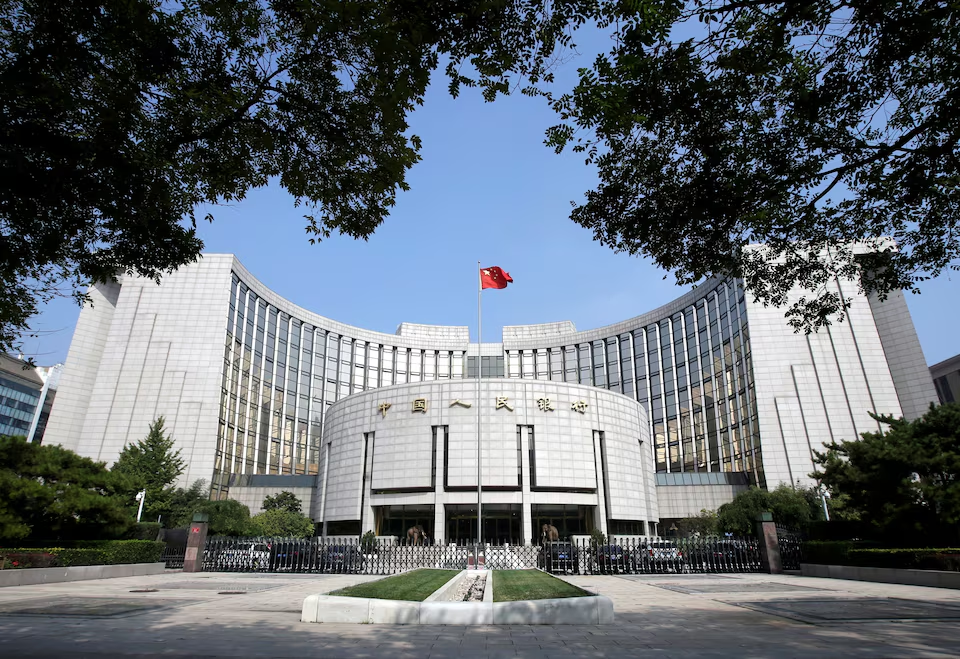CBDCs: The Future of Money or Just Another Digital Fad?
Hey GEERDS, money’s been around forever—shells, gold coins, paper bills, and those shiny credit cards that make us feel rich (until the bill arrives). But hold up—there’s a new player in the game. No, it’s not Bitcoin. It’s not Dogecoin either (shoutout to Elon for the memes). It’s CBDCs—Central Bank Digital Currencies.
They’re like cash, but digital. Like crypto, but not wild. Like your bank balance, but without the sketchy middlemen. Some say they’re the future of money. Others think they’re just government-approved surveillance wrapped in a sleek digital wallet. So, what’s the real deal? Let’s dive in.
Catch a support chair or something, for this Reaper is going to change tones and sing you poetry.
What the Heck Are CBDCs?
Picture this: You’ve got cash in your pocket, but instead of physical bills, it’s just 1s and 0s chilling in a government-backed digital wallet. That’s what a CBDC is—digital currency issued by your country’s central bank, meaning it’s not decentralized like Bitcoin or Ethereum. It’s got the same value as your regular dollars, euros, or yen, but it exists purely in the digital realm.
Think of it like if your government decided to launch its own Venmo, but without the fees and with a whole lot more power over your transactions. Unlike Bitcoin, which fluctuates like a rollercoaster at Six Flags, a CBDC is stable, backed by the government, and won’t vanish overnight because some billionaire tweeted about it.

Why Are Countries Jumping on the CBDC Bandwagon?
The whole world seems to be having a serious case of FOMO when it comes to digital currencies. In May 2020, only 35 countries were exploring CBDCs. Fast forward to today, and 134 countries—representing a massive 98% of the world’s GDP—are deep into research, development, or pilot programs. That’s a glow-up if I’ve ever seen one.
One of the biggest reasons governments are racing to launch CBDCs is that cash is basically becoming a relic. Let’s be real, when was the last time you even carried cash? Exactly. Digital payments are taking over—Apple Pay, Google Pay, PayPal, and a dozen other apps make it way too easy to tap and go. CBDCs are a way for governments to keep up with the times.
Another major reason? Crypto is eating into the financial system. Bitcoin, Ethereum, and stablecoins like USDT have shown people that they don’t necessarily need banks to send or store money. And, let’s not forget China’s digital yuan—one of the first fully operational CBDCs—which is already processing billions in transactions. Other countries don’t want to get left behind.
And then there’s the efficiency factor. CBDCs promise faster transactions, lower fees, and more financial inclusion. Imagine being able to send money across borders instantly without your bank charging you an arm and a leg. Sounds good, right? Well, there’s a catch (or a few).
The Good, The Bad, and The Glitchy
Now, before we all start celebrating a cash-free future, let’s talk about the pros and cons. Because while CBDCs sound like a financial utopia, they also have some serious red flags.
On the bright side, CBDCs could help billions of unbanked people get access to money. Right now, if you don’t have a bank account, you’re basically locked out of the digital economy. With CBDCs, all you need is a smartphone, and boom—you can store and send money instantly, no bank account required. That’s a game-changer for countries where traditional banking is limited.
Then there’s the speed and efficiency factor. If you’ve ever waited three business days for a bank transfer (which, let’s be honest, feels like an eternity), CBDCs promise to make transactions instant. Imagine sending money across borders in seconds, without outrageous fees. This could totally disrupt how remittances work—especially for families who rely on money sent from abroad.
But, here’s where it gets sketchy. Privacy is a HUGE concern. With physical cash, no one tracks what you buy, where you spend it, or how much you’ve got stuffed under your mattress. But with CBDCs? Every transaction could be monitored by the government. Some fear that this could lead to financial surveillance on a whole new level. Imagine living in a world where the government could limit what you spend based on your behavior. Spooky, right?
And let’s not forget about cybersecurity risks. We’ve seen major banks and financial institutions get hacked before—what happens if a country’s entire CBDC system gets compromised? It’s not like you can hide your cash under the bed when everything’s digital. A single cyberattack could cause chaos.
Then there’s the simple fact that people aren’t fully sold on CBDCs yet. In Nigeria, for example, the eNaira launched with a ton of hype, but adoption has been painfully slow—less than 0.5% of Nigerians actually use it. Turns out, just because something is new and digital doesn’t mean people will automatically trust it.

Real-World Trials and Tribulations
So, which countries are actually testing CBDCs? Some are diving in headfirst, while others are still dipping their toes.
China is leading the pack with its e-CNY (digital yuan). Since launching pilot programs, China has processed nearly $987 billion worth of transactions using its CBDC. That’s more than the GDP of some countries. The government is pushing for widespread adoption, and with a population of 1.4 billion people, this could be the biggest financial shift in decades.
Then there’s the Bahamas’ Sand Dollar, which was the first fully operational CBDC launched in 2020. It’s been a pretty successful experiment in digital currency, showing that even small island nations can lead the way in financial innovation.
And, of course, there’s Nigeria’s eNaira. Despite being one of the first African countries to roll out a CBDC, adoption rates have been shockingly low. Turns out, convincing people to switch from cash to digital isn’t as easy as flipping a switch.
The U.S. and European Union? They’re still playing it safe, researching and debating whether CBDCs are the move. The U.S. Federal Reserve is studying a digital dollar, but with privacy concerns and regulatory hurdles, it’s still a long way off.

The Road Ahead: Digital Utopia or Dystopia?
So, are CBDCs the future of money? Maybe. They have the potential to revolutionize finance, make transactions cheaper, and improve financial access. But they also come with major concerns—privacy, security, and government control over personal finances.
It all comes down to how they’re implemented. Will governments use CBDCs to empower people or to monitor every cent they spend? Will they truly be better than cash and crypto, or will they just be another way for banks and governments to maintain control?
For now, CBDCs are still an experiment. Some countries will embrace them, others will reject them, and a few might find the perfect balance between innovation and personal freedom.
One thing’s for sure—money is evolving. Whether CBDCs are a digital revolution or just another financial trend remains to be seen. But hey, if nothing else, at least we’ll have another fancy payment option to flex in the future.
What do you think? Are you ready to ditch cash for digital, or are you keeping your dollars right where they are? Let’s talk in the comments!
References:
Global CBDC Exploration: As of recent data, 134 countries, representing 98% of the world’s GDP, are exploring Central Bank Digital Currencies (CBDCs). This is a significant increase from May 2020, when only 35 countries were considering them.
China’s Digital Yuan Transactions: China has conducted the world’s largest CBDC pilot scheme, with its digital yuan (e-CNY) transactions reaching nearly $987 billion.
eNaira Adoption in Nigeria: Despite being one of the first African countries to launch a CBDC, Nigeria’s eNaira has seen limited adoption. As of March 2024, the eNaira accounted for less than 1% of the total currency in circulation.
Projected CBDC Issuance by 2030: A survey indicates that up to fifteen CBDCs are likely to be issued by 2030, reflecting the growing global interest and exploration in digital currencies.
Global CBDC Transaction Projections: The number of global payments made using CBDCs is projected to reach 7.8 billion by 2031, a significant increase from 307.1 million in 2024.
eNaira Wallet Usage: Reports suggest that 98% of users have abandoned their eNaira wallets, indicating challenges in user retention and ongoing engagement.
eNaira Value Decline: The Central Bank of Nigeria reported a marginal decline in the value of the eNaira, dropping by 0.16% from N18.35 billion to N18.32 billion at the end of September 2024.
eNaira Circulation Increase: The value of eNaira in circulation rose by 302% in nine months, reaching N10.26 billion at the end of September 2023, reflecting increased adoption of Africa’s Central Bank Digital Currency.
Consumer Attitudes Towards CBDCs: Surveys indicate that among respondents hesitant about adopting a CBDC, 32.5% would consider replacing cash, while 29.4% might replace credit cards.
Bank of England’s CBDC Exploration: The Bank of England is exploring the development of a wholesale CBDC aimed at facilitating large transactions between banks, aligning with a global trend among central banks to investigate tokenizing money through blockchain technology.
Discover more from Ge-erdy Verse
Subscribe to get the latest posts sent to your email.



